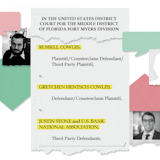When Minnesota's cornfields were "dirty" with weeds in the '40s and '50s and farms were cluttered with brushy fence rows, shelterbelts, livestock pastures and cattail sloughs, the state's population of ringneck pheasants abounded.
In 1942, when hunters banged out a record harvest of 1.75 million birds in one season, pheasants were viewed primarily as farm game birds. They nested in the pastures, ate from foxtail weeds in the corn, took cover in fence rows and hunkered into cattails to survive winter.
The same lands today are drained and paved over with monoculture rows of corn and soybeans. Postwar mechanization cut into the birds' habitat and President Nixon's agriculture secretary, Earl Butz, accelerated the change by exhorting farmers in the 1970s to "plant fence row to fence row'' and "get big or get out.''
Now, Minnesota hunters see far fewer pheasants. The 2014 harvest fell below 200,000 birds for the first time in three decades and the state is coming off another down season in 2017. Prospects are marginally brighter for the 11-week season that opens Saturday, but rooster counts in the state remain intimately associated with agricultural practices that are hostile — by convention — to their habitat.
"Farms still provide some cover but not the diversity of cover they once did,'' said Greg Hoch, prairie habitat team supervisor for the Department of Natural Resources (DNR).
Ninety-five percent of land in the state's pheasant range is privately owned. Or put another way, publicly accessible habitat in the pheasant range often accounts for less than 2 percent of the landscape, the DNR has said.
That puts pheasant populations at the mercy of farm programs. And while favorable weather conditions during this year's spring hatch helped produce a definite uptick in the annual pheasant index in all but one region, the long-term fate of ringnecks is largely tied to USDA's massive Conservation Reserve Program (CRP).
Hoch said the DNR has documented how pheasants follow the ups and downs in CRP set-asides. The program pays farmers to idle lands that produce ecological benefits.



